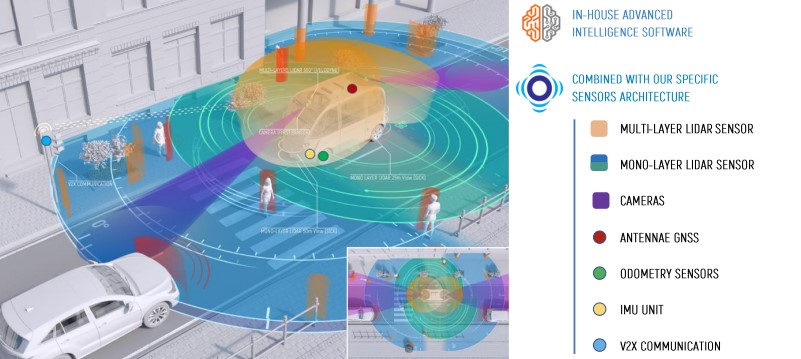Space-enabled shuttles: a step in the autonomous direction

The Syndicat Mixte des Transports pour le Rhône et l’Agglomération Lyonnaise (SYTRAL)
The Lyon public transport network Transports en Commun Lyonnais (TCL) is managed by the public transport authority SYTRAL. Its task is to build and set up the agglomeration’s transport policy, carry out investments, determine pricing policy and adapt the transport offer in the Rhône and Lyon region in France.
The Challenge
As the number of people living in cities is growing, local authorities fear a rise in the number of vehicles and pollution. To respond to the increasing urban congestion, cities are exploring smarter and greener mobility solutions. One of the main challenges to encourage the use of public transport, is to bridge gaps at the edges of existing transit systems. This challenge is also known as “the first and last kilometre”. It represents the distance from a specific starting point to a transport network, or the distance remaining from a transport network to a final destination.
Lyon’s public transport network is the second largest in France. Nevertheless, in some areas of the city, commuters still face the first and last kilometre barrier. For example, the large majority of those working in the Gaulnes business park still prefer to use the car, while only 15% rely on public transport. To face this challenge, rather than increasing the number of traditional bus lines, the city decided to expand the coverage of the existing infrastructure.
The satellite solution
Lyon has a strong history of innovation in public transport, starting in 1862 with the introduction of the first funicular railway. This innovative mindset led SYTRAL to contact the Keolis Group and NAVYA, a company based in Lyon that specialises in autonomous electric shuttles. The driverless shuttles offer a cost-effective way to encourage the use of public transport.
To be guided safely through the trafficked streets of Lyon, all the shuttles have a GNSS antenna. Thanks to satellite navigation, the position of a vehicle is constantly monitored by the control centre. Moreover, to ensure constant monitoring of the buses also where the satellite connection is interrupted, the vehicles are equipped with additional guidance and detection systems such as cameras and sensors.

In September 2016, Lyon launched its very first autonomous shuttle service named NAVLY in the Confluence district, complementing an urban renewal project overlooking the Saône River. The NAVLY shuttles, running at an average speed of 15 km/h, make five stops on a public route of 1.3 km. The vehicles are freely accessible, carry up to 15 passengers at a time and circulate regularly every day. For the moment, an operator is present on the bus. To know the position of the shuttles in real time and to consult the schedule, an application called “NAVLY” is available for free.
In March 2019, another autonomous shuttle line was added. The Mobilité Intelligente & Autonome (MIA) service connects the offices in the Gaulnes business park with the nearby tram station. This 2.4 kilometre route, which includes three stops, runs during rush hours and at lunch time. The objective is to offer an alternative to the car and encourage the use of public transport for those working in the area. A third line, N1, was launched in November 2019: two more autonomous shuttles provide a regular service between the Décines Grand Large tram station and the Parc Olympique Lyonnais stadium.
The results
The autonomous shuttles offer a cost-effective response to the challenges of urban mobility, in addition to conventional means of public transportation. Overall, the autonomous shuttles in Lyon have been used by over 70 000 passengers to date, while the N1 shuttles transport an average of 80 passengers every day. These first and last kilometre services mark the first wave of autonomous vehicle adoption in the city. This project is part of the EU-funded project Autonomous Vehicles to Evolve to New Urban Experience (AVENUE), and more autonomous vehicles will be deployed in other European cities in the future. Local transport in rural areas, or on specific sites such as university campuses and hospitals, can benefit from this smart mobility service as well.
